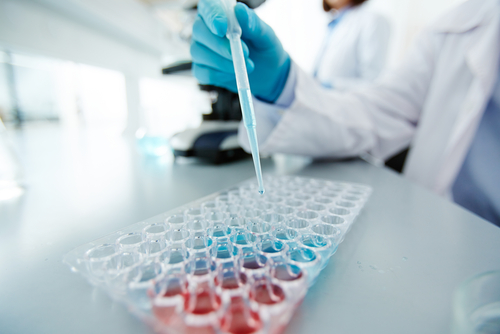2 Compounds Show Ability to Protect Neurons, Raise Dopamine Levels

Two compounds with hormone-like effects — prostaglandin E1 (PGE1) and prostaglandin A1 (PGA1) — may help to increase dopamine levels in the brain and slow Parkinson’s progression by activating a protein, called Nurr1, that supports dopaminergic neurons, a study reports.
The study, “PGE1 and PGA1 bind to Nurr1 and activate its transcriptional function,” was published in the journal Nature Chemical Biology.
Prostaglandins have various roles in controlling body functions, such as the contraction and relaxation of smooth muscle, the dilation and constriction of blood vessels, blood pressure control, and modulating inflammation.
Nurr1 is a protein that plays a key role in the development and maintenance of midbrain dopaminergic neurons — those that produce dopamine and are gradually lost throughout Parkinson’s disease. It does so by inducing the expression of genes that are essential for dopamine production and nerve cell survival.
A previous study found that Nurr1 was present at lower levels in the substantia nigra (a brain region rich in dopaminergic neurons) of Parkinson’s patients, suggesting Nurr1 could be a therapeutic target for treating the condition.
Scientists at Nanyang Technological University in Singapore (NTU Singapore) and Harvard University set out to identify molecules that may bind to Nurr1 and activate its protective properties.
“Considering the essential function of Nurr1, we have been searching for its activating molecules in the body,” Yoon Ho Sup, a professor at the NTU School of Biological Sciences and study author, said in a press release.
The team identified PGE1 and PGA1 as two molecules able to bind to Nurr1. Using dopaminergic neurons derived from rodents, researchers further observed that PGE1 and PGA1 were able to induce the expression of Nurr1’s target genes, increase dopamine levels, and protect against cell death.
Of note, gene expression is the process by which information in a gene is synthesized to create a working product, like a protein.
Treatment with PGE1 and PGA1 was seen to significantly lessened motor symptoms in a mouse model of Parkinson’s disease.
While PGE1-treated mice showed a more extensive recovery of motor function than PGA1-treated mice, both PGE1 and PGA1 protected dopaminergic neurons in the substantia nigra from cell death. Dopamine levels were also increased by both prostaglandins.
“We have successfully identified that PGE1/PGA1 is the molecular pair that acts specifically on Nurr1 and can lead to neuroprotective effects on the brain,” Yoon said.
Data also suggest “that native and/or synthetic ligands of Nurr1 may be developed as a novel class of mechanism-based neuroprotective drugs for PD [Parkinson’s disease] and other human disorders involving Nurr1 dysfunction,” the researchers wrote.
“Given that all candidate Parkinson’s drugs have failed to show neuroprotective abilities in clinical trials, our findings may offer an opportunity to design mechanism-based disease-modifying therapeutics to treat Parkinson’s disease with little side effect,” Yoon said.
“PGA1 is not a new kid on the block, but a molecule known to exhibit anti-inflammation and anti-tumour properties. Prostaglandins like PGE1 are available for clinical use, for example in obstetrics cases. This means that the compound can potentially be re-positioned to treat Parkinson’s patients, which can accelerate the time needed to take an experimental drug to the clinic,” added Lim Kah Leong, vice dean of research at the NTU Lee Kong Chian School of Medicine.






